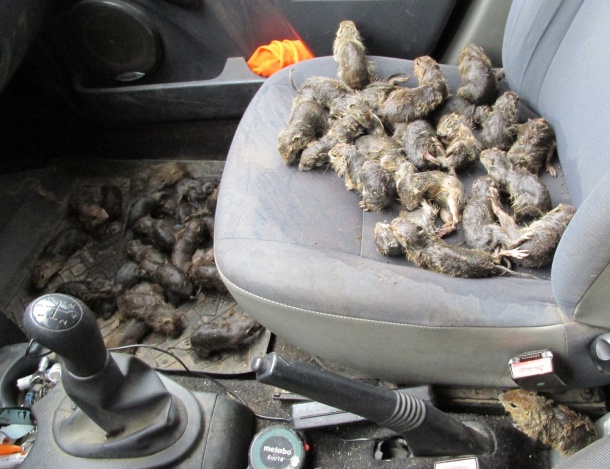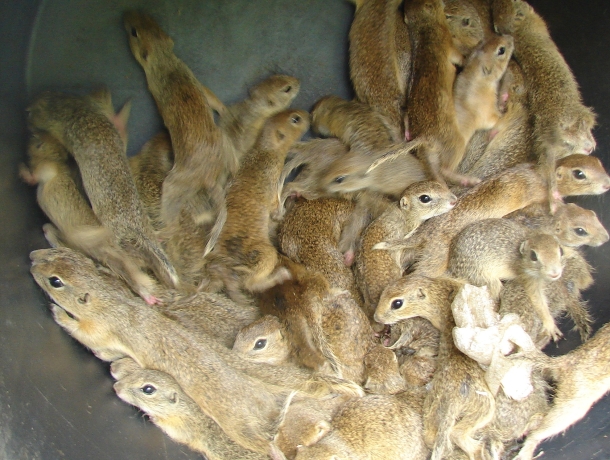Washed out ground squirrels at the Biele Vody locality, Slovakia

_Washed out ground squirrels at the Biele Vody locality in June 2020 (Source: Živá planina) _
European ground squirrels live in burrows underground and an important factor to their success is the depth of groundwater in the soil. If an area has a high level of groundwater, you are unlikely to find ground squirrels there. Whilst they may not inhabit such areas, this doesn‘t protect them from flash flooding. Flash flooding can occur due to heavy rains or a large amount of snowmelt and it can easily flood a colony in a matter of hours. This becomes a particular problem across the spring months. During May, young ground squirrels are born and remain in the burrow for up to a month and then in June the new young start to emerge. In their first few days above ground, they can be clumsy and unsteady on their feet. Therefore, if the ground squirrels experience flooding during these times, it can be very serious to the survival of the colony.
June 2020 was an unfortunate example of this. After heavy rain flooded the whole valley, the ground squirrel locality in the pastures of Biele Vody on the Muráň Plain in Slovakia, was in severe danger. Hundreds of young ground squirrels died. But luckily, around 500 were saved by members of the Živá Planina association and other volunteers who look after this colony. Drowning wasn’t the cause of most of these deaths however as most of the unfortunate animals succumbed to the cold instead. Luckily for many, Ervín and his colleagues from Živá Planina were on hand to check the locality, rain or shine, and proceeded to collect and help dry out the washed-out young.

_Ground squirrels finally dry in the Biele Vody locality, June 2020 (Source: Živá planina) _
So far, we haven’t any reports of heavy rain affecting the ground squirrel localities of the Czech Republic this year. But it’s not unheard of. In the golf course in Karlovy Vary, the camp in Albeři, the meadow in Loděnice and the airport in Strakonice have all had reports of heavy rains affecting the local ground squirrel population. During monitoring by the AOPK CR, such catastrophe events have been recorded ten times, on average causing a 73% decrease in the colony (Matějů et al. 2019). The problem is not necessarily the heavy rain itself, but of the size and isolation the colony. As most of these colonies are small, in such torrential rain, these areas are quickly completely flooded. Following such a catastrophe, there are usually no individuals from the colony, or no colony close enough, which could replenish the colony.
Whilst we cannot influence torrential rains, we can continue to support existing colonies, linking them to encourage metapopulations. This in the future will ensure individual colonies can complement each other. If, in the future, such catastrophes happen again we know we can quickly support the population, as they managed in Biele Vody.
__
References:





